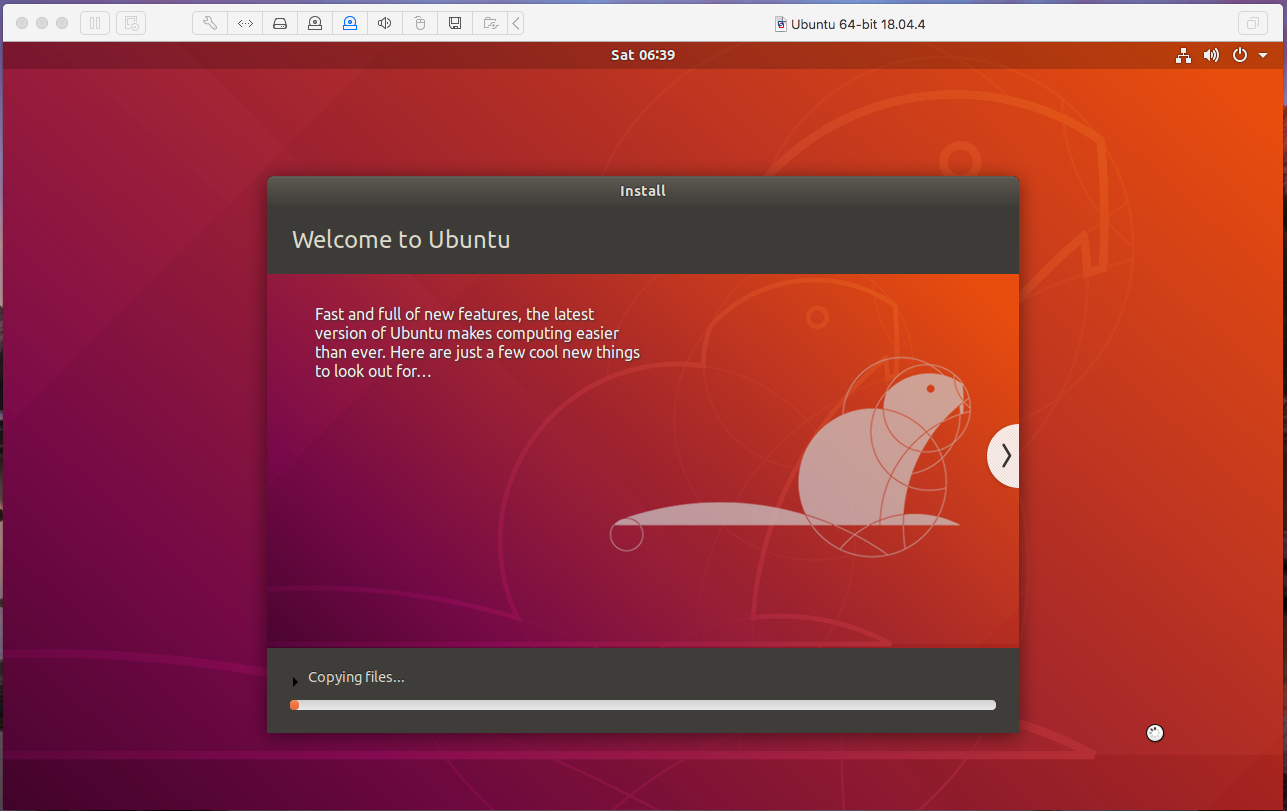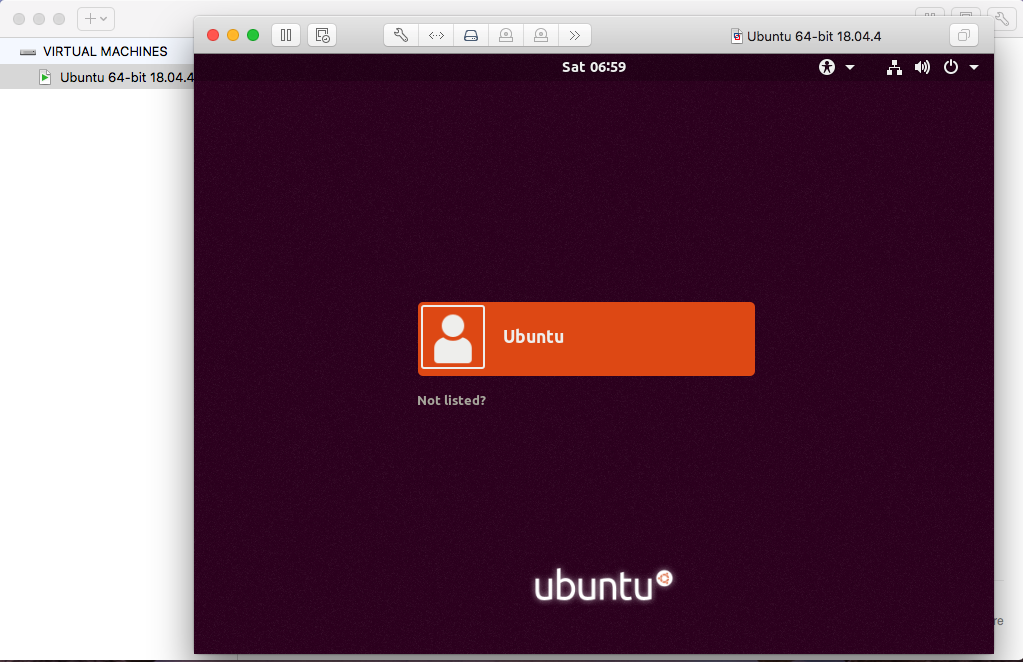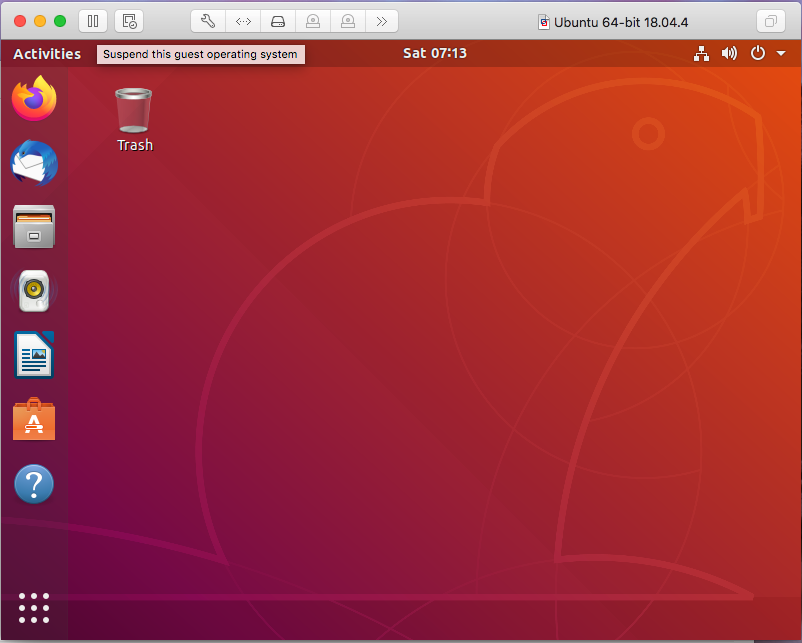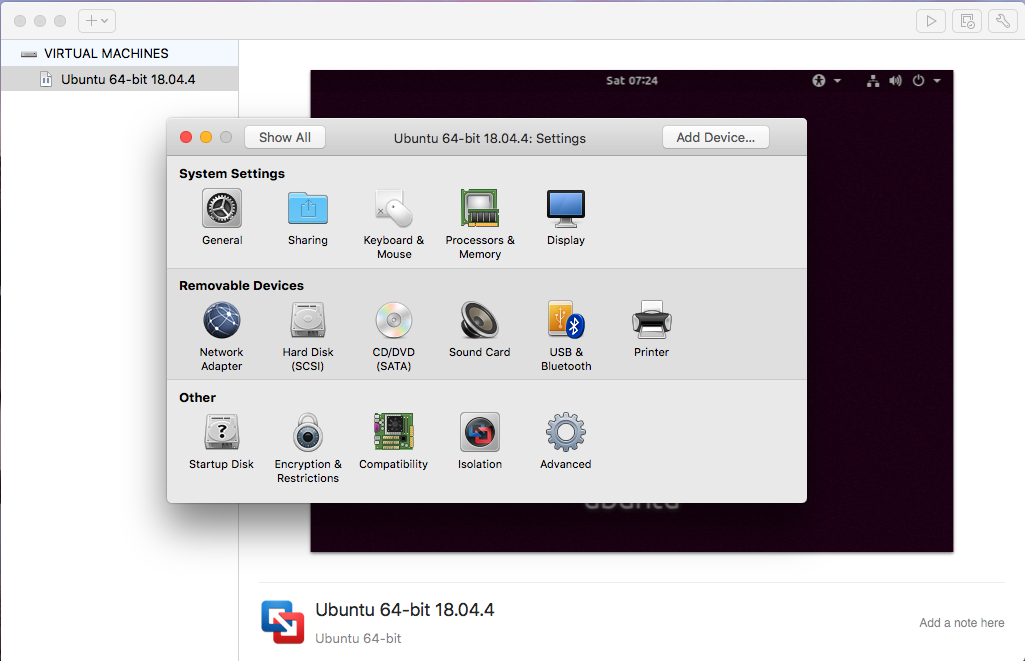Ubuntu is among the popular operating systems used for production and development purposes. It might be required to try it out or run in the dual-mode without allocating dedicated hardware to it. We can run it as a guest operating system on macOS using the VMware Fusion without actually installing it on dedicated hardware. This tutorial provides all the steps required to install Ubuntu 18.04 LTS as a guest operating system on macOS High Sierra using the Easy Install option of VMware Fusion 15. The steps should be similar for other versions of macOS including Sierra, Mojave, and Catalina.
Notes: Make sure that your Mac machine got at least 8GB of memory having a multi-core processor to install Ubuntu On VMWare Fusion for optimal performance.
Prerequisites
This tutorial assumes that you have access to a Mac machine with at least 8GB of memory and VMware Fusion is already installed on it. You can also follow How To Install VMware Fusion On Mac.
Download Ubuntu
Open the Official Page to download the most recent version of Ubuntu Desktop. It provides the options to download Ubuntu Desktop as shown in Fig 1.

Fig 1
Add the Virtual Machine
In this step, we will create the Virtual Machine to install Ubuntu on VMware Fusion using the ISO downloaded by us in the previous screen. We will use the Easy Install option available for Ubuntu. It will do a quick install of Ubuntu with the default configurations and only asks for the user credentials.
Click the Plus Icon at the top of the VMware Fusion, and also click the Add Option.
On clicking the Add Option, it will ask to choose the installation method as shown in Fig 2 b.

Fig 2 b
Click the Install from disk or image Option to choose the ISO. Now select the Ubuntu ISO file downloaded by us in the previous step. It will add it to the disc list as shown in Fig 3.

Fig 3
Now keep the Ubuntu disk selected and click the Continue Button. The next screen provides options to use Easy Install and also asks for the username and password as shown in Fig 4.

Fig 4
Now keep the Use Easy Install Checkbox selected and provide the username and password. Click the Continue Button to finalize the Virtual Machine configurations as shown in Fig 5.

Fig 5
It auto-assign the disk capacity, memory, and CPUs as shown in Fig 5. Now click the Finish Button. It also asks to choose the virtual machine name as shown in Fig 6.

Fig 6
Provide appropriate virtual machine name and storage location using the options as shown in Fig 6. Finally, click the Save Button to create the Virtual Machine. It creates and saves the virtual machine and also auto-start the installation of Ubuntu on VMware Fusion.
Install Ubuntu
The VMware starts playing the Virtual Machine in the Easy Install Mode after successfully creating it. It auto-play the Virtual Machine as shown in Fig 7.

Fig 7
It installs Ubuntu as shown in Fig 8 to Fig 13.

Fig 8

Fig 9

Fig 10

Fig 11

Fig 12

Fig 13
After successfully completing the installation, the VMware Fusion boots Ubuntu and shows the Login Screen as shown in Fig 14, Fig 15, and Fig 16.

Fig 14

Fig 15

Fig 16
Now login using the credentials provided while creating the virtual machine. It shows the Ubuntu Desktop on login success as shown in Fig 17 and Fig 18.

Fig 17

Fig 18
VMware Tools for Ubuntu
The VMware Fusion also auto-install VMware Tools for Ubuntu in the Easy Install Mode. We can even go to full-screen mode by maximizing the windows as shown in Fig 19.

Fig 19
If we hover at the top of Ubuntu Screen, it shows the options of VMware Fusion virtual machine as shown in Fig 20.

Fig 20
Stop, Start, Suspend, Resume
After completing the installation of Ubuntu on VMware Fusion, we can either suspend it to resume later or stop the virtual machine to start it when required. In case we suspend the virtual machine, it also stores the state of the guest operating system.
Now stop the virtual machine by logging out from Ubuntu as shown in Fig 21.

Fig 21
We can start it back by playing the virtual machine as shown in Fig 22.

Fig 22
It asks to attach the disk as shown in Fig 23 and starts booting the guest operating system as shown in Fig 23 and Fig 24.

Fig 23

Fig 24
We can also suspend Ubuntu to save the state as shown in Fig 25 and Fig 26.

Fig 25

Fig 26
The virtual machine library of VMware Fusion shows the snapshot of the suspended machine as shown in Fig 27.

Fig 27
We can again start the virtual machine if it was stopped by us as shown in Fig 28.

Fig 28
We can also resume the virtual machine if it was suspended by us as shown in Fig 29.

Fig 29
We can also change the settings while the machine is suspended or stopped as shown in Fig 30.

Fig 30
Summary
This tutorial explained the steps required to download the Ubuntu Desktop Image from the official website of Ubuntu. It also explained the steps to create the virtual machine using the VMware Fusion and install & launch the Ubuntu on VMware Fusion. This comes handy in several situations when we do not have options to install Ubuntu directly on the hardware. Keep commenting to join the discussion about installing Ubuntu as a virtual machine using VMware player using the comment options as shown below.

